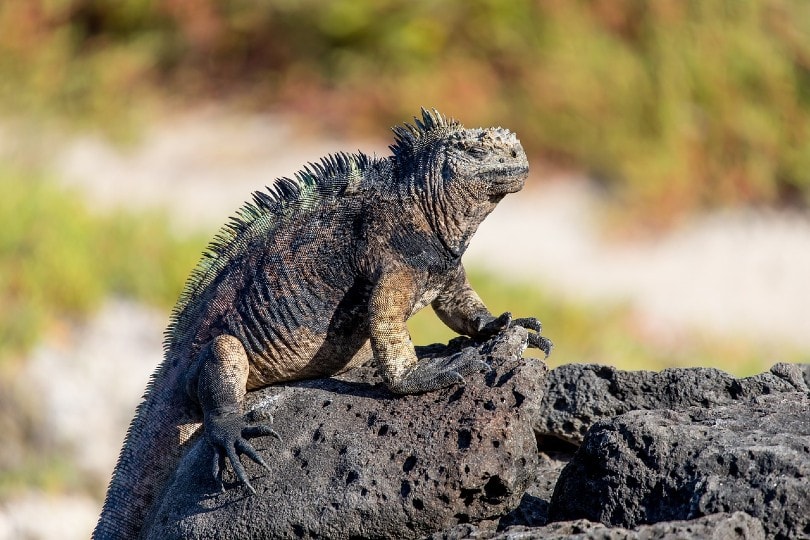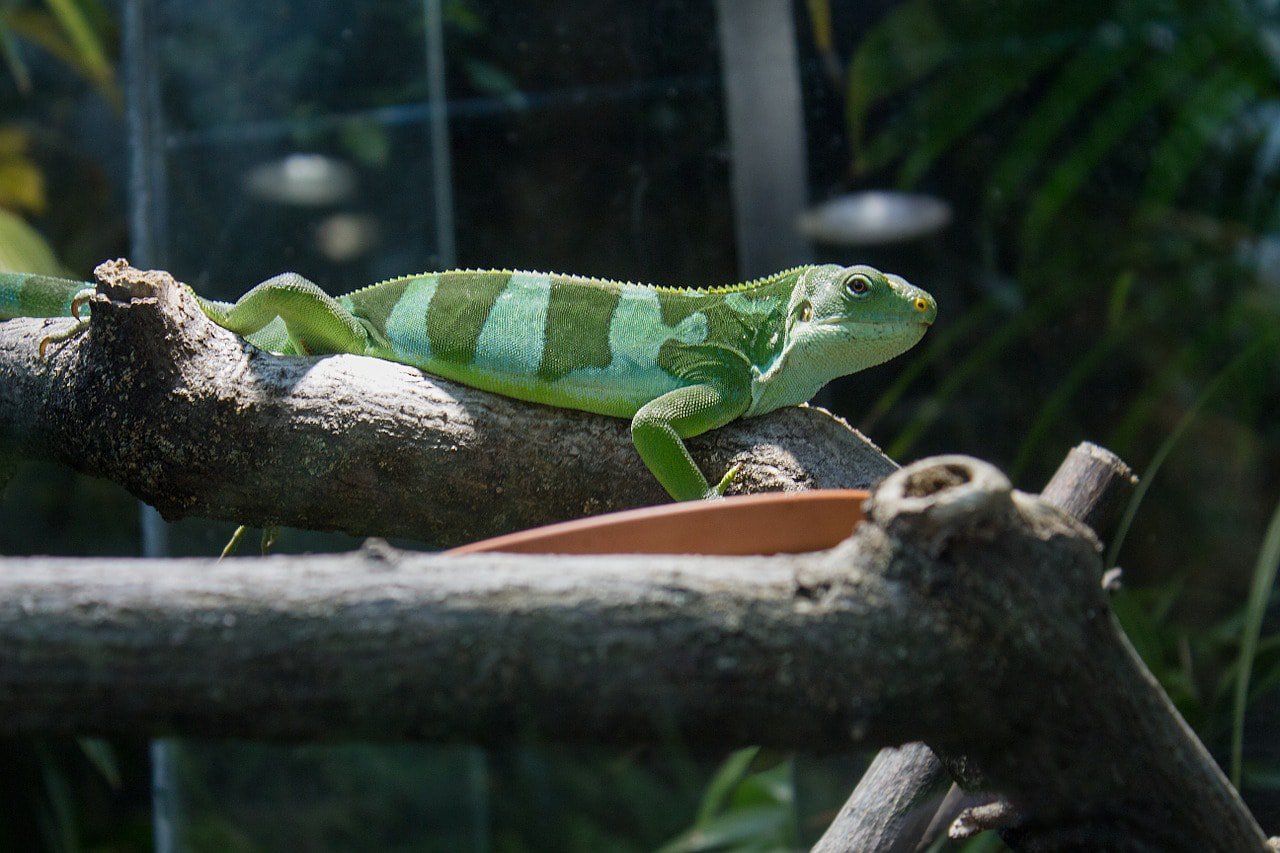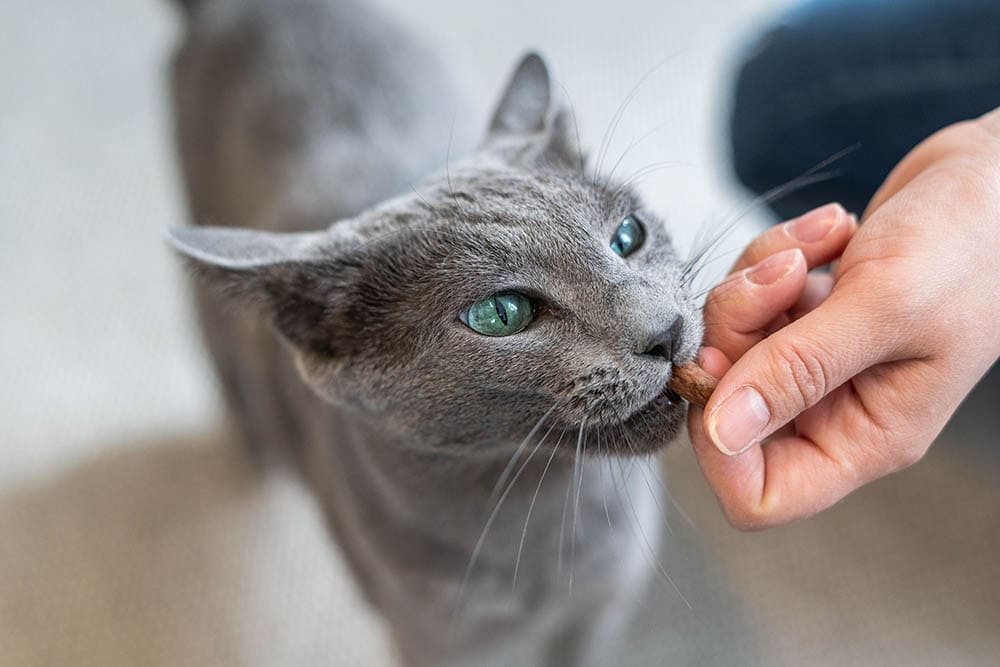Click to Skip Ahead
Determining if an iguana is a male or female can be a difficult task. The younger the iguana is, the tougher it will be to figure out the sex based on physical characteristics. It is not until they reach sexual maturity that iguanas display clear physical differences that allow the average person to tell if they are male or female.
If you are reading this article, you probably have a pet iguana and want to know if it is a male or a female. Or, perhaps you are considering an iguana as a pet and want to know if you should look for a male or a female. Whichever category you fall into, this article will explain how to tell the difference between male versus female iguanas. It will also explore the differences in temperament and health.

Physical Characteristics of Male and Female Iguanas
As juveniles, both male and female iguanas look the same. Upon reaching sexual maturity, the males begin to develop different physical characteristics. Depending on the species, iguanas reach sexual maturity between 1 and 4 years of age. Before this, the only way to determine the sex of the iguana is to have a veterinarian probe the cloacal vent.
Once your iguana has reached sexual maturity, you should be able to differentiate between male and female based on physical characteristics.
Male Iguana Characteristics

- Size: Male iguanas are longer and thicker.
- Musculature: A male iguana will have a more muscular chest and legs.
- Femoral pores: The male iguana will develop large femoral pores on the inside of their legs.
- Dewlap: The male iguana will have a larger dewlap under its chin.
- Spikes: Male iguanas develop longer spikes on their heads and along their backs.
- Hemipenal bulges: Only male iguanas will have two hemipenal bulges on their belly near the tail.
Female Iguana Characteristics

- Size: Female iguanas remain smaller and thinner than males.
- Spikes: While they develop spikes on their backs, females do not develop head spikes like males.
- Dewlap: The dewlap and jowls on a female iguana are smaller than those on a male.
Breeding Season Changes in Male and Female Iguanas
Male and female iguanas don’t just demonstrate changing characteristics when they reach sexual maturity. Breeding season can also cause differences in appearance and temperament between the two sexes.
Males are typically more aggressive during the breeding season. They are more likely to bite and attack. Males also change color during the breeding season. Often, they will change to a bright color, like orange or red, to appear more attractive. They can become restless and pace back and forth, bob their heads, or swing their tails. Their appetites can also decrease, resulting in weight loss.
Females also experience changes during the breeding season. Some also change color to a bright orange or red. They will lose their appetite as their eggs develop. Some females lash out at their handlers or other iguanas during this time. It is best to leave the iguana alone unless she appears ill to avoid overstressing her.
Temperament Differences Between Male and Female Iguanas

When it is not the breeding season, male and female iguanas are typically similar in temperament. Their behavior will vary depending on breed and situation. Maintaining a healthy and engaging environment is the key to a happy pet iguana. It is important to remember that even pet iguanas are wild animals. You should always be mindful of their needs and avoid over-handling them.
Health Conditions for Male and Female Iguanas
There are some health conditions that male and female iguanas are prone to. These include metabolic bone disease resulting from a lack of UVB light. Parasites can also be deadly for both sexes if not appropriately treated by a qualified exotic animal veterinarian.
Due to their high aggression levels, male iguanas are more likely to experience injuries to their tails and limbs during the mating season.
Female iguanas are prone to egg binding. This occurs when eggs become trapped inside the iguana, and the iguana cannot lay them. If left untreated, egg binding can be fatal.


Is a Male or Female Iguana the Best Pet for You?
If you are not breeding iguanas, the sex is not critical in determining if an iguana is a good pet choice for you. Both exhibit similar temperaments and health risks that rely heavily on their care and habitat. Males and females also exhibit changes during the breeding seasons regardless of whether or not they have a mate. The most important aspect to consider is whether you can properly care for your pet, male or female.
- You May Also Like: Types of Iguanas: An Overview
Featured Image Credit: (Top) Selv_Friska, Shutterstock, | (Bottom) Saeedatun, Shutterstock










